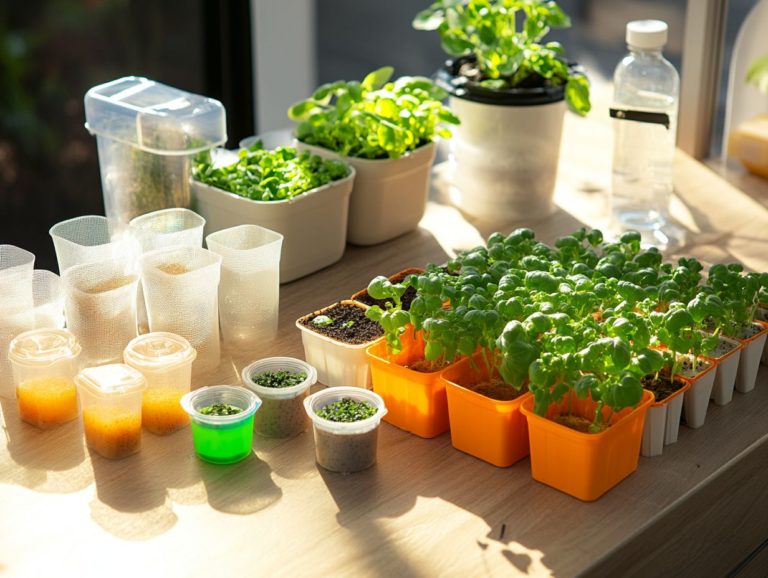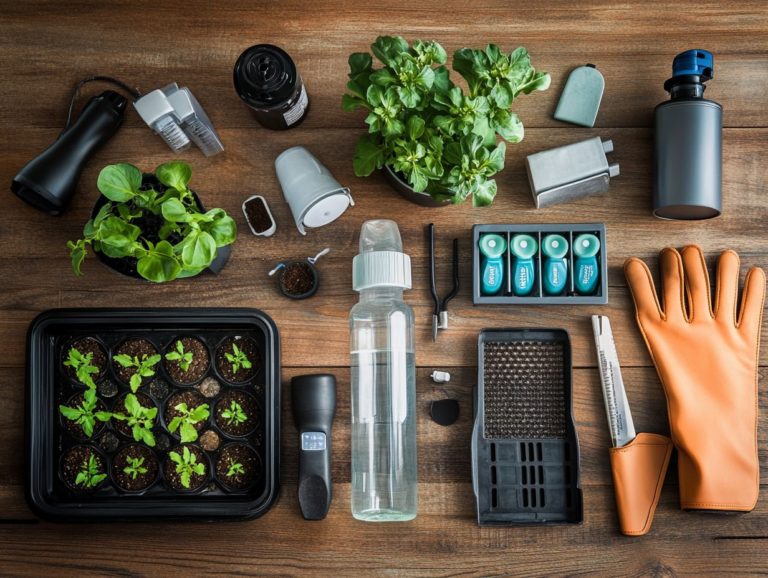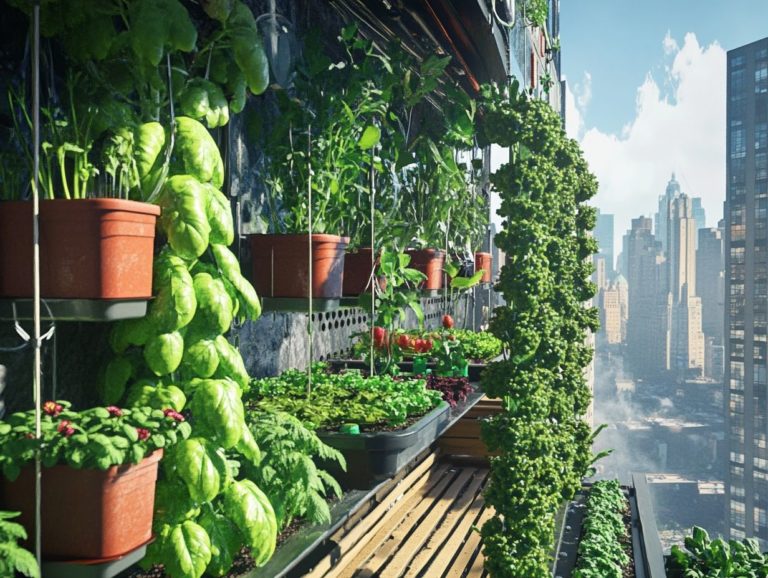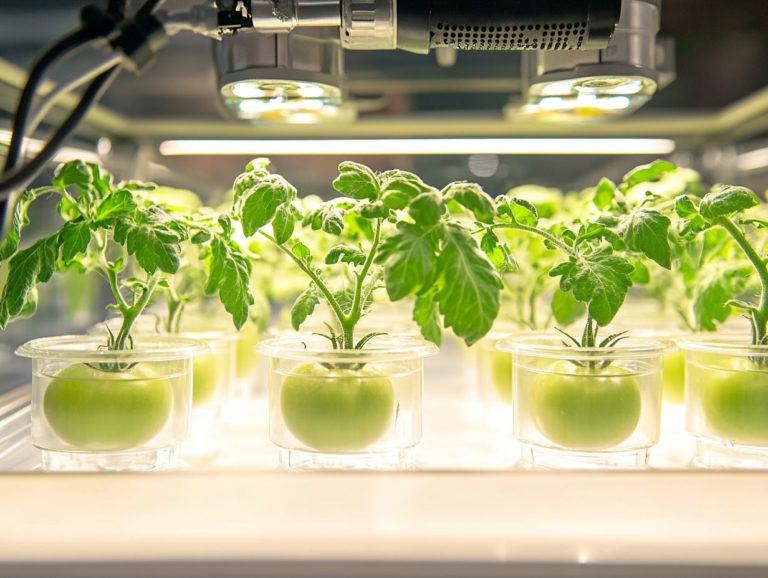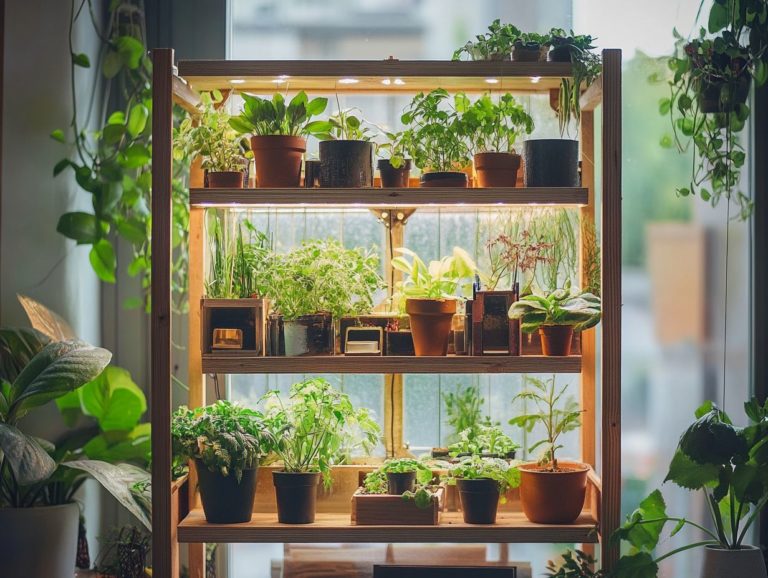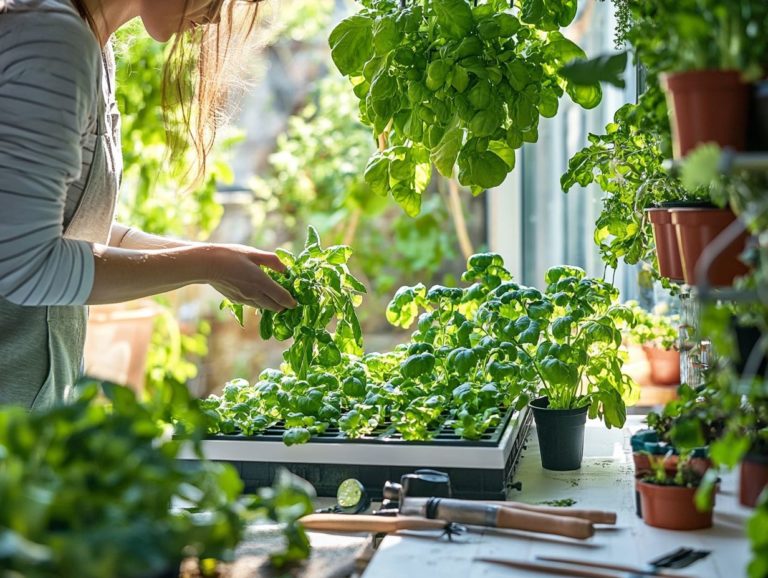5 Advantages of DIY Hydroponic Systems
Are you eager to cultivate your own plants while saving money and optimizing your space? DIY hydroponic systems present an innovative solution that enables you to grow a diverse range of plants without the need for traditional soil.
This article delves into five key advantages of establishing your own hydroponics system, including significant cost savings, precise control over nutrients, and the sheer joy of gardening as a fulfilling hobby.
Additionally, you’ll find essential tips for beginners, common pitfalls to steer clear of, and strategies to elevate your hydroponic experience. Whether you re a seasoned gardener or just dipping your toes into this green adventure, there s valuable insight here for everyone!
Contents
- Key Takeaways:
- 1. Saves Money in the Long Run
- 2. Control Over Nutrients and Pesticides
- 3. Can Be Customized to Fit Any Space
- 4. Can Grow a Wide Variety of Plants
- 5. Can Be a Fun and Educational Hobby
- What Is Hydroponics and How Does It Work?
- Frequently Asked Questions
- What are the 5 advantages of DIY hydroponic systems?
- How do DIY hydroponic systems save costs?
- Can DIY hydroponic systems be set up in small spaces?
- Why is control over nutrients and environment important in hydroponics?
- What makes DIY hydroponic systems flexible in design and setup?
- How are DIY hydroponic systems more sustainable than traditional gardening methods?
Key Takeaways:
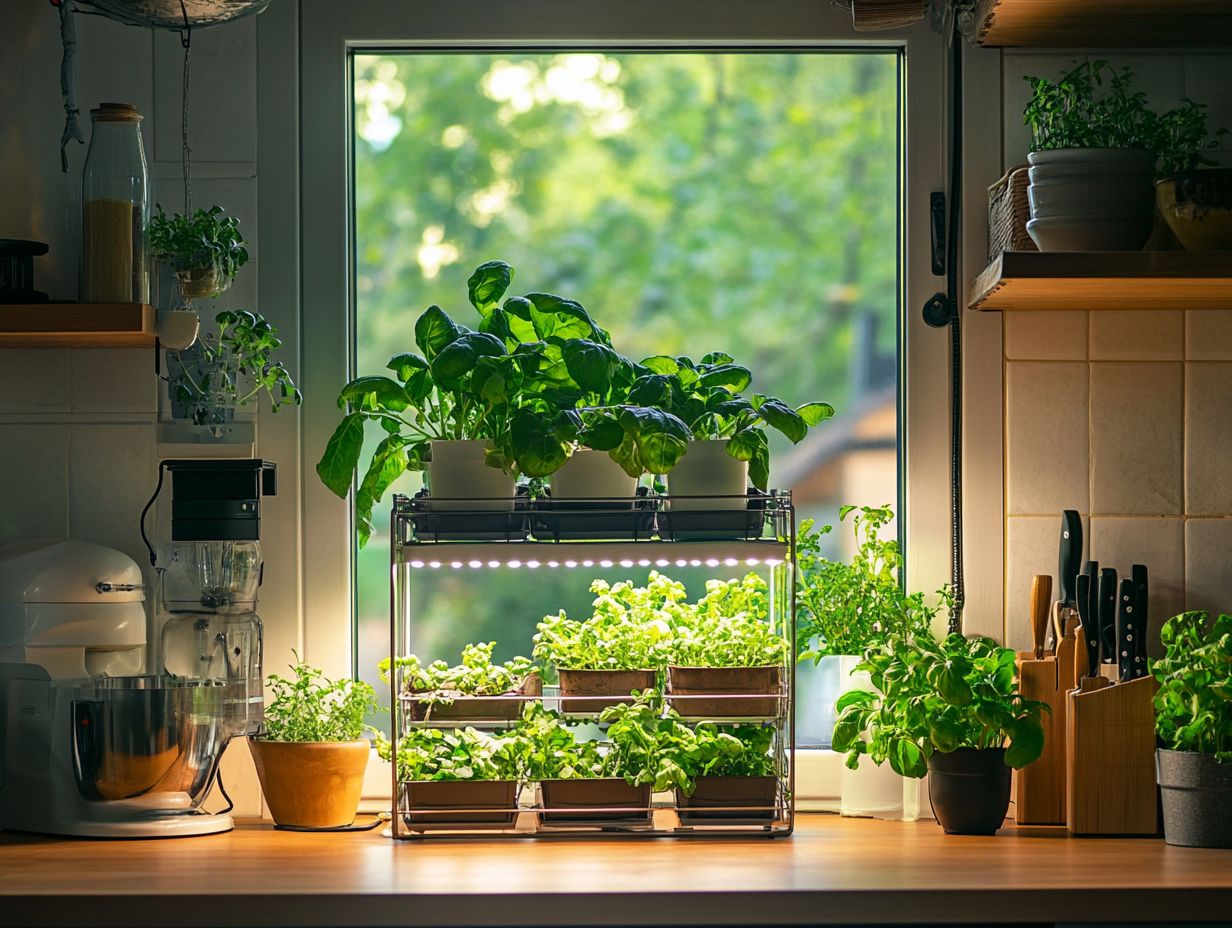
- DIY hydroponic systems can save money in the long run due to reduced water and nutrient usage.
- By building your own hydroponic system, you have control over what nutrients and pesticides are used, making it a healthier and more sustainable option.
- Whether you have a small balcony or a large backyard, DIY hydroponic systems can be customized to fit any space, allowing anyone to grow their own fresh produce.
1. Saves Money in the Long Run
Investing in hydroponics for your indoor farming venture is not only a savvy approach to sustainability but also a pathway to substantial long-term savings. By minimizing costs related to soil degradation and maximizing water conservation through efficient nutrient solutions, you position yourself for success.
Hydroponic systems significantly reduce water usage compared to traditional gardening methods, thanks to their recirculating water systems. This translates to lower utility bills and a smaller environmental footprint, which is a win-win for both your finances and the planet.
Additionally, you can also decrease your reliance on chemical pesticides by using smart pest control. This not only trims your operating costs but also promotes healthier crops.
When you combine these benefits with the ability to achieve higher yields in controlled environments, hydroponics is an exciting choice for anyone looking to save money and explore 5 reasons to try NFT hydroponic systems while growing fresh produce year-round!
2. Control Over Nutrients and Pesticides
Hydroponics offers you an unmatched level of control over nutrient solutions and pest management, allowing you to optimize nutrient uptake and efficiency while significantly reducing the reliance on harmful pesticides in carefully regulated environments.
This cutting-edge farming method gives you the power to manage nutrient delivery with precision, encouraging a thorough exploration of various hydroponic techniques, such as deep water culture and nutrient film technology, which greatly enhance nutrient absorption.
By customizing nutrient solutions to meet the specific needs of your crops and their growth stages, you can minimize nutrient waste and bolster overall plant health. Effective environmental management practices like regulating temperature, humidity, and light exposure are essential for fostering robust plant growth, ensuring that your plants flourish in their nutrient-rich surroundings, ultimately leading to higher yields and superior quality produce.
3. Can Be Customized to Fit Any Space
One of the most captivating aspects of hydroponics lies in its remarkable adaptability. You can customize hydroponic systems to fit virtually any space, making them perfect for urban gardening, vertical farming, and even creating micro-climates tailored for optimal plant growth.
Whether you have a cozy apartment or a sprawling commercial greenhouse, these systems can be tailored to suit your specific needs and circumstances. Smaller indoor gardens thrive with hydroponic setups that are easy to manage and require minimal equipment, while larger operations can adopt robust, scalable systems that enable a high-density planting strategy.
Vertical farming, in particular, allows you to maximize available space by stacking plants vertically, resulting in increased food production per square foot. This innovative method not only enhances resource efficiency utilizing less water and energy but also champions sustainable agricultural practices in our ever-growing urban landscapes.
Overall, hydroponics offers incredible benefits that can transform your gardening experience. By setting up your own system, like the ebb and flow hydroponic systems, you can save money, control what goes into your food, and make the most of any space available to you. So, why not start your own DIY hydroponic journey today?
4. Can Grow a Wide Variety of Plants
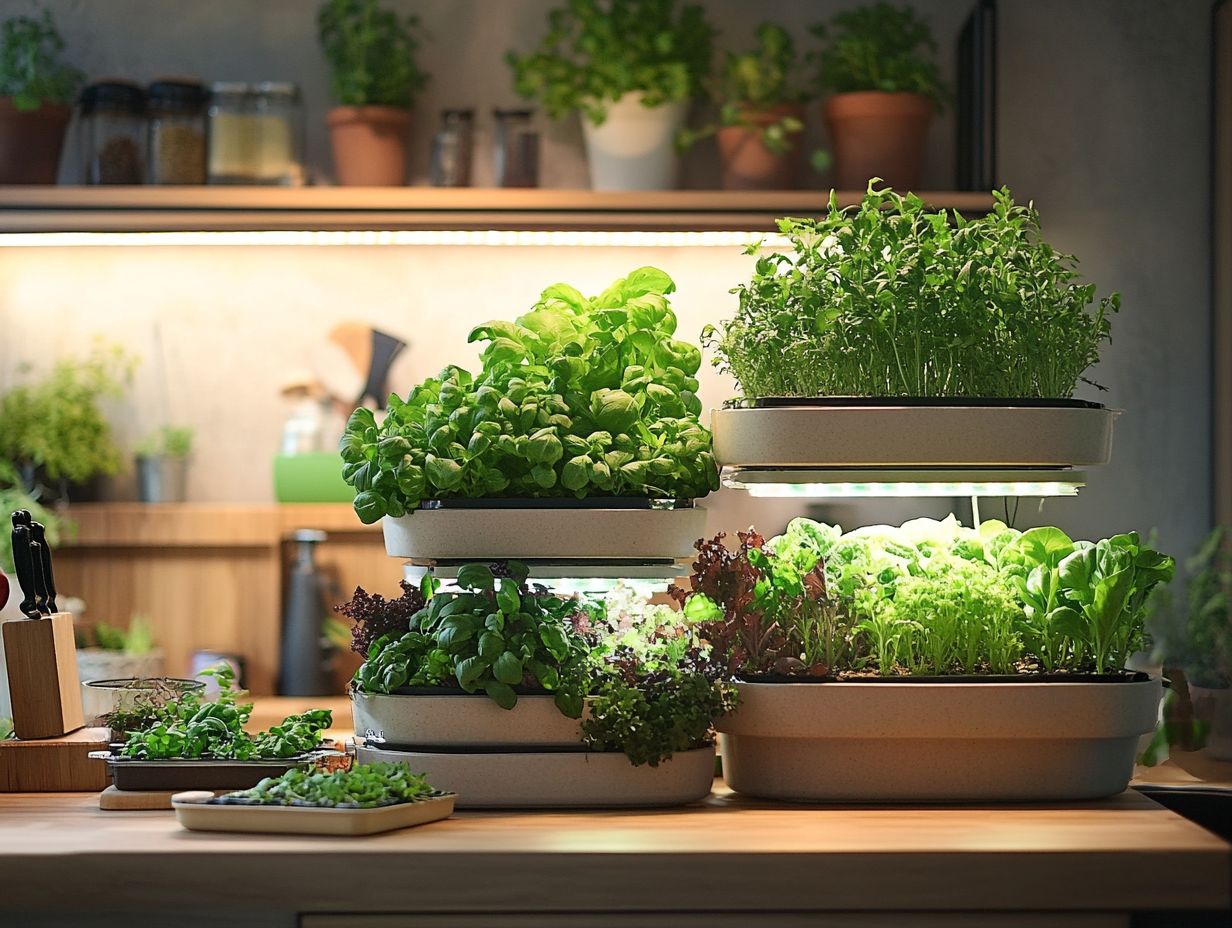
Hydroponics offers many ways to grow nutrient-rich crops. You can cultivate popular choices like lettuce, tomatoes, strawberries, and peppers, making it an incredibly versatile solution for both home gardeners and commercial growers who are passionate about organic farming.
Hydroponic systems support the growth of aromatic herbs like basil and cilantro. These herbs not only elevate the flavor of your dishes but also provide a wealth of health benefits, including improved digestion and anti-inflammatory properties.
The ability to control nutrient delivery allows you to grow vegetables packed with more vitamins and minerals compared to their soil-grown counterparts.
This innovative method plays a crucial role in fostering sustainable food production. By minimizing land use and water consumption, you adopt a more eco-friendly approach that addresses the urgent issue of global food shortages.
5. Can Be a Fun and Educational Hobby
Engaging in hydroponics can be a delightful and enlightening hobby. It yields fresh, healthy food and imparts essential knowledge about indoor agriculture and plant maintenance, appealing to enthusiasts of all ages.
As you immerse yourself in hydroponics, you’ll experience the joy of nurturing plants. You’ll gain valuable insights into the fascinating intricacies of plant biology from root systems to nutrient absorption.
This innovative method of growing food in a soil-less environment sparks curiosity about environmental science. You’ll explore how factors like water quality, light exposure, and pH levels impact plant growth.
Over time, as you watch your home-grown vegetables flourish, you’ll cultivate a deeper appreciation for sustainable practices and the science behind them. This exciting journey combines hands-on fun with valuable learning, making your hydroponics experience truly rewarding.
What Is Hydroponics and How Does It Work?
Hydroponics is all about growing plants without soil. It uses liquid mixes that provide essential vitamins and minerals directly to the roots. This method allows you to control environmental conditions, leading to faster growth and higher yields than traditional gardening techniques.
This innovative approach focuses on effective nutrient management. It ensures your plants receive the perfect blend of elements crucial for their health and productivity. By eliminating soil, you gain enhanced control over factors like pH, temperature, and moisture levels, creating an ideal microclimate for plant development.
Plus, without soil, the risk of pests and diseases diminishes significantly. Water usage is minimized, making hydroponics a truly sustainable option.
With the capability to cultivate plants anywhere from urban rooftops to greenhouses this method unlocks new avenues for food production. It offers substantial benefits for communities facing food security challenges.
What Are the Different Types of DIY Hydroponic Systems?
You ll discover a variety of DIY hydroponic systems at your disposal. These include recirculation systems and various hydroponic techniques, each designed to optimize nutrient solutions for effective plant growth and management.
Among these systems, the nutrient film technique (NFT) provides a continuous flow of nutrient solution over plant roots. This method is particularly suited for fast-growing greens like lettuce and herbs.
Deep water culture (DWC), in contrast, submerges the roots in a nutrient-rich solution, fostering robust growth for larger plants such as tomatoes and peppers. If you’re aiming for maximum yield in limited spaces, aeroponics takes it a step further by misting roots with nutrients.
Each system presents unique advantages. It s crucial to evaluate your available space and plant preferences before embarking on your hydroponic gardening journey.
What Are the Essential Components of a DIY Hydroponic System?
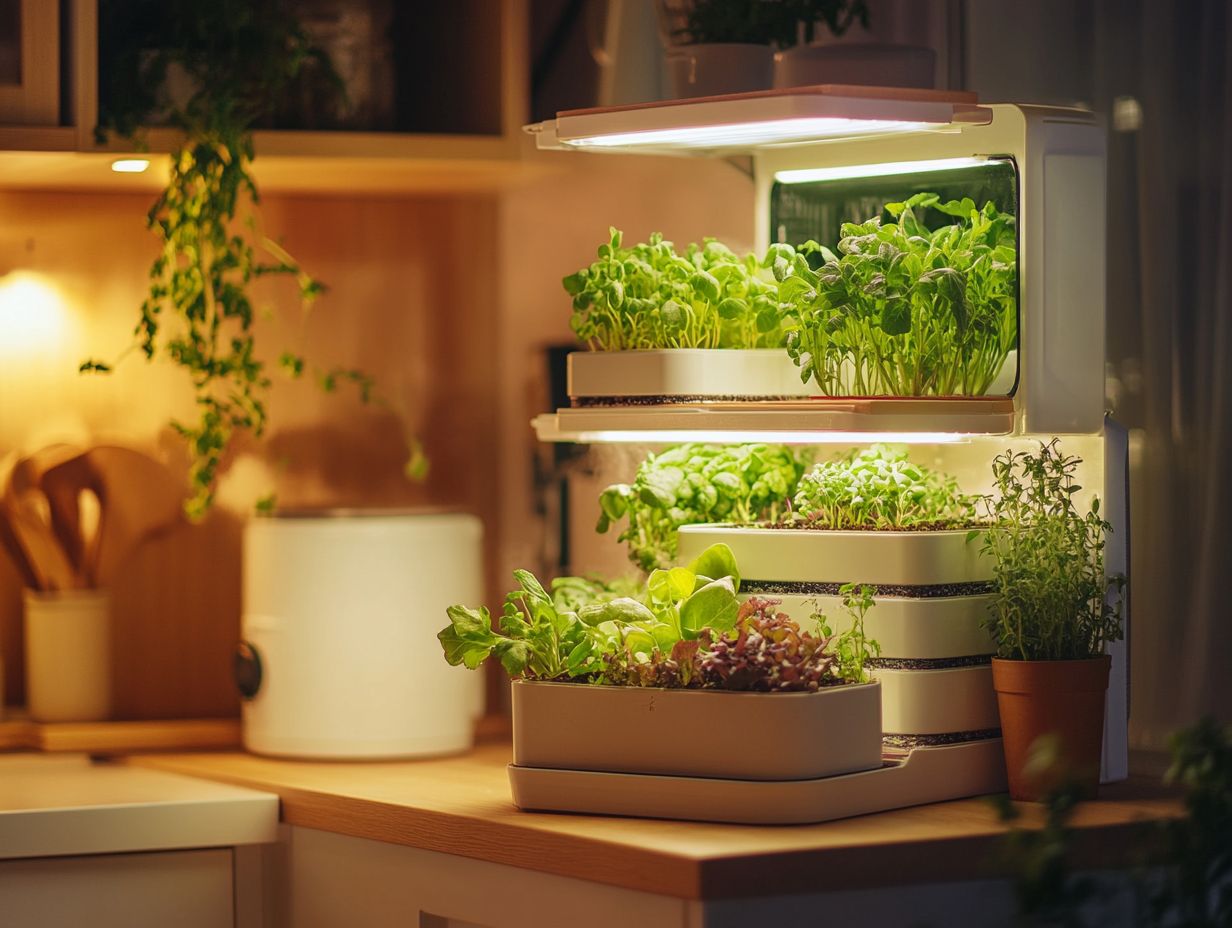
A successful DIY hydroponic system hinges on essential components like grow lights, liquid fertilizers, and plant support systems all crucial for maintaining the optimal conditions necessary for robust plant growth.
Each component plays a pivotal role in ensuring your plants receive the light, nutrients, and stability they require to thrive. Grow lights mimic sunlight, enabling plants to photosynthesize effectively, even in indoor spaces or areas with limited natural light.
Liquid fertilizers offer a carefully balanced mix of water-soluble nutrients, delivering essential minerals directly to the roots. This promotes rapid growth and vitality. Meanwhile, plant support systems like net pots or specialized grow media stabilize your plants while allowing their roots to access nutrient-rich water efficiently.
When combined, these elements create a harmonious environment that fosters vigorous plant development.
How Can a Beginner Get Started with DIY Hydroponics?
For those eager to embark on a hydroponic journey, starting with DIY hydroponics is a truly rewarding experience! It introduces you to the fundamentals of hydroponic systems, liquid fertilizers, and essential plant maintenance techniques.
This hands-on approach not only demystifies the process but also nurtures a deeper understanding of how plants can thrive without traditional soil. Begin your exploration by diving into various types of hydroponic systems, such as the top 5 hydroponic growing systems for beginners,
- Deep Water Culture
- Nutrient Film Technique
Take the time to find the system that aligns best with your space and budget. Next, sourcing quality materials like containers, pumps, and grow lights is crucial. For a comprehensive overview, check out 5 essential components of a hydroponic system. You can also check local suppliers or explore online resources for excellent options.
Understanding the basics of nutrient management will ensure your plants receive the right balance of elements. Regular care practices will keep your green thumb flourishing.
What Are the Common Mistakes to Avoid in DIY Hydroponics?
Newcomers to DIY hydroponics often stumble over some familiar pitfalls, such as mismanaging liquid fertilizers and overlooking environmental conditions, which can seriously impact plant growth and overall success.
For example, neglecting to monitor pH levels may lead to nutrient lockout, which occurs when plants can’t absorb nutrients properly. Many beginners may not fully grasp how vital it is to regularly check light intensity and humidity, both essential for healthy plant development.
To overcome these challenges, it’s crucial to invest in reliable testing kits and maintain a balanced nutrient mix that’s tailored to your specific plants. By consistently observing and adjusting the growing environment, you can transform a struggling setup into a thriving hydroponic garden. For those looking to maximize their results, exploring 5 hydroponic systems for maximum yield can make the experience rewarding and enjoyable.
How Can One Maximize the Benefits of DIY Hydroponics?
To truly maximize the benefits of DIY hydroponics, focus on optimizing nutrient uptake, ensuring proper crop management, and maintaining ideal environmental conditions for your plants.
In this endeavor, delve into advanced techniques for crafting tailored nutrient solutions that cater to specific plant varieties and growth stages. This personalized approach can dramatically boost your plants health and yields!
By keeping a vigilant eye on environmental factors such as pH levels, temperature, and humidity, you create a controlled atmosphere that promotes optimal growth conditions.
Implementing regular monitoring systems and making adjustments as needed will further boost plant vitality. Incorporating methods like companion planting or utilizing beneficial microorganisms creates a synergistic effect on growth, ultimately leading to a bountiful harvest.
Frequently Asked Questions
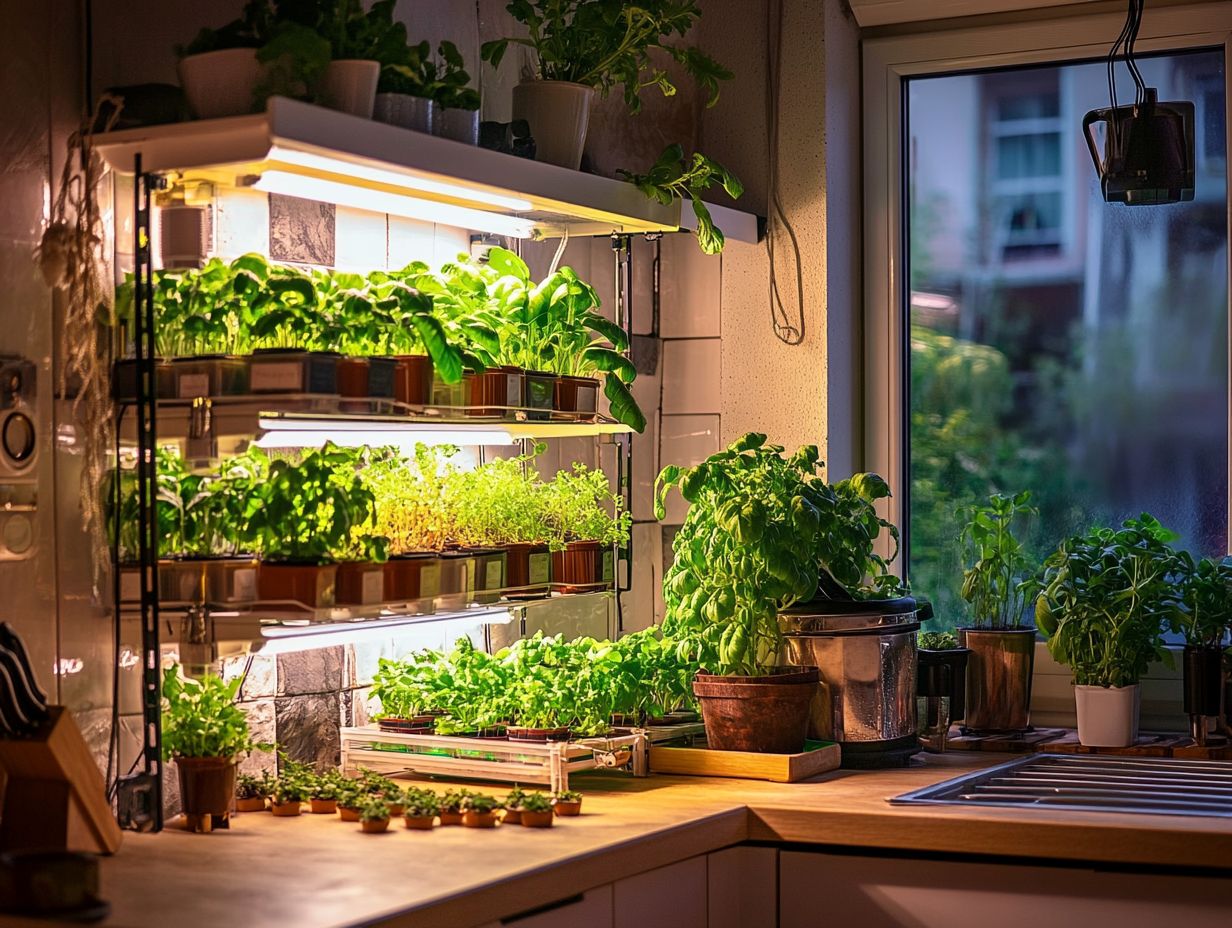
What are the 5 advantages of DIY hydroponic systems?
DIY hydroponic systems are cost-effective, space-saving, and give you control over nutrients and environment. They also offer flexibility in design and are more sustainable.
How do DIY hydroponic systems save costs?
These systems use basic materials and often repurpose recycled objects. This makes them a budget-friendly choice compared to buying ready-made options.
Can DIY hydroponic systems be set up in small spaces?
Absolutely! You can easily customize them to fit snugly in small spaces like balconies or even indoors.
Why is control over nutrients and environment important in hydroponics?
In hydroponic systems, plants grow without soil. Controlling nutrients and environmental factors like light and temperature is crucial for thriving plants.
What makes DIY hydroponic systems flexible in design and setup?
You can easily modify DIY hydroponic systems to meet the specific needs of different plants. This versatility sets them apart from pre-made systems.
How are DIY hydroponic systems more sustainable than traditional gardening methods?
These systems use less water and have a smaller carbon footprint. You can grow food while being kinder to the planet!

